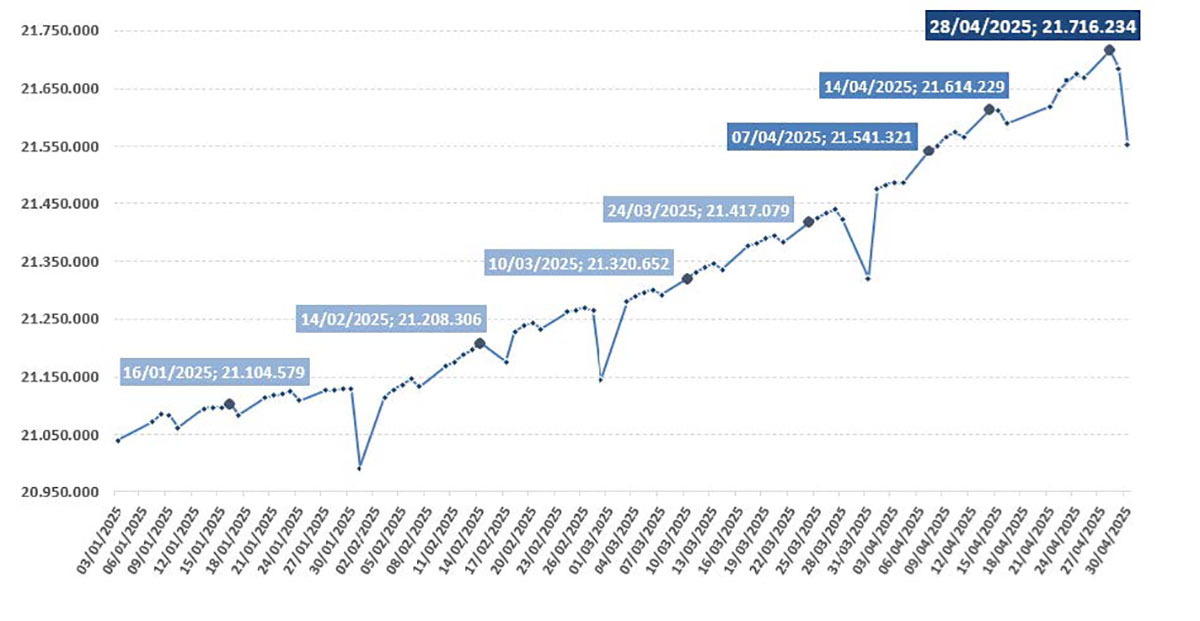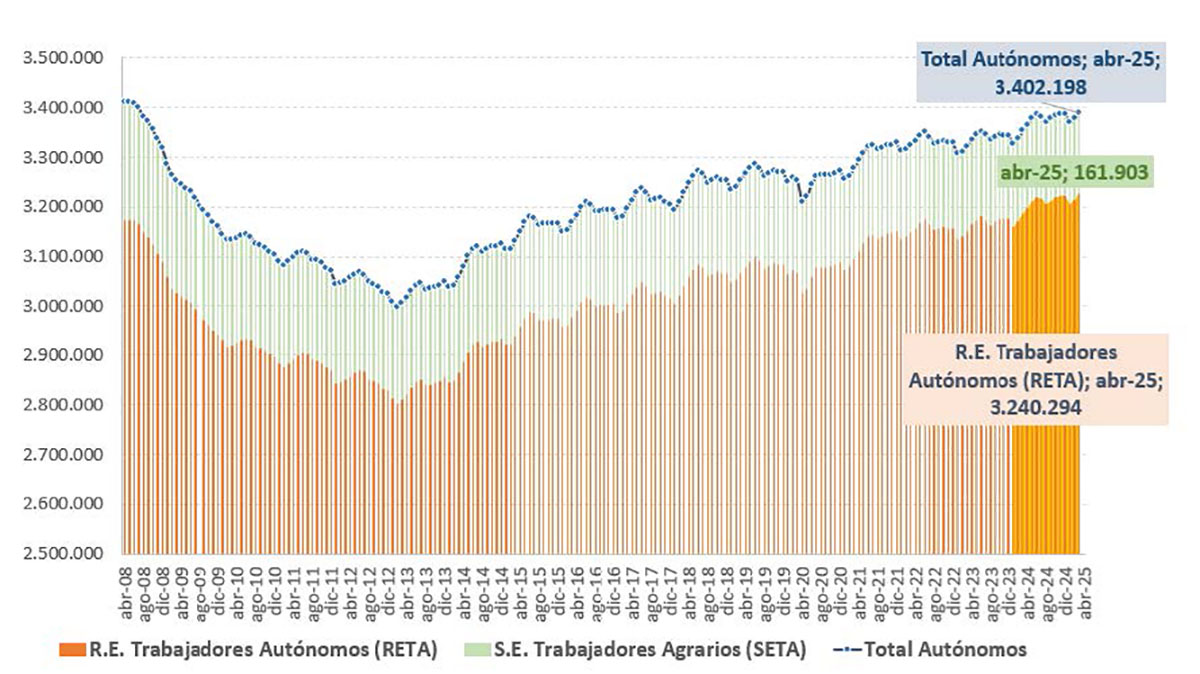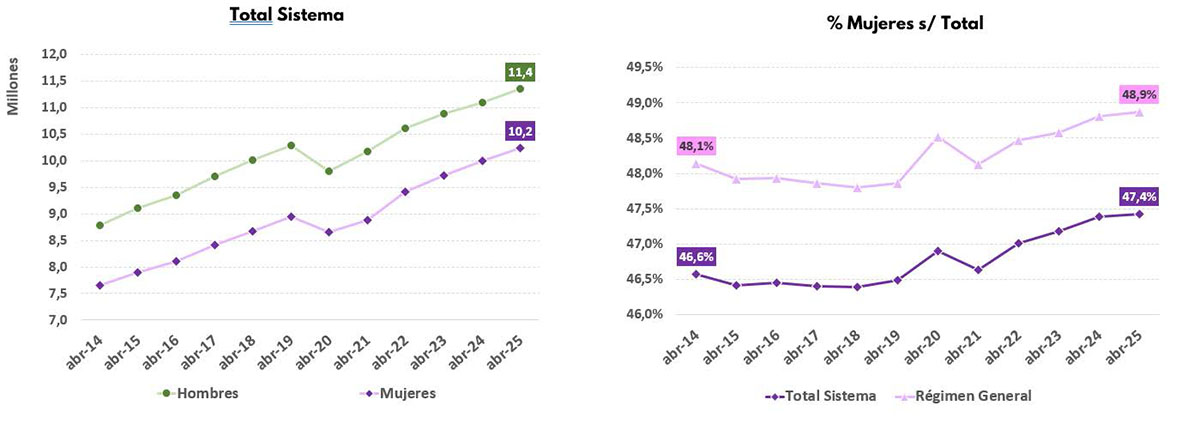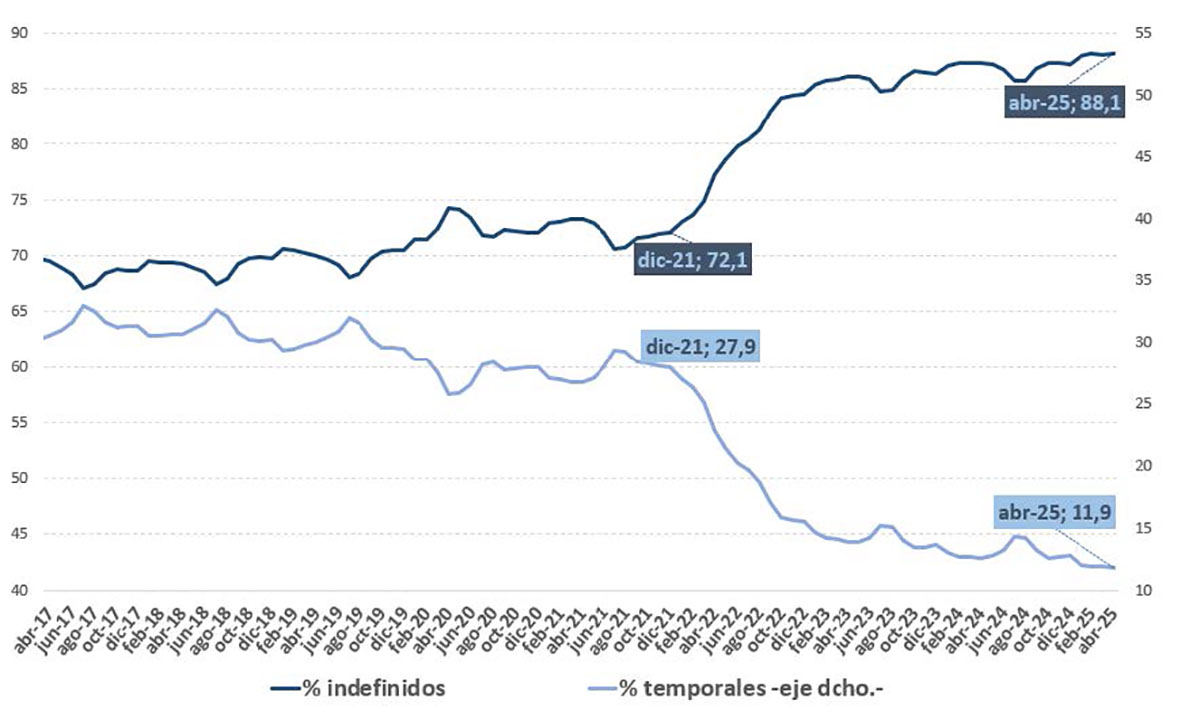Employment reaches new highs in April with almost 21.6 million national insurance contributors
News - 2025.5.6
The number of national insurance contributors exceeded 21.5 million people in April (21,550,139), discounting seasonality and the calendar effect. This represents an increase of 483,358 employed people in the last year (+2.3%), and 69,160 more than in the previous month.

"Employment continues to grow and is of higher quality. The results of the labour reform are unquestionable," argued the Minister for Inclusion, Social Security and Migration, Elma Saiz. "Since its entry into force, we have added 1.74 million contributors and have reached historic figures of 21.5 million workers, exceeding 21.6 million on several days in April. At one point, we even exceeded 21.7 million members".
Average recorded contributor figures (original series) was 21,588,639, 230,993 more than in March (+1.1%), the second largest increase in an April and the fourth largest month-on-month rise since 2012. This is 487,134 more employed people than a year ago (+2.3%).
Looking at the daily series, on eight days of April this figure exceeded 21.6 million, all of them in the second half of the month. On 28 April, the figure exceeded 21.7 million.

In April, almost all sectors of the General Regime gained contributors in both year-on-year and monthly terms. In the last year, the Transport and Storage (+7.3%), Agriculture, Livestock, Hunting, Forestry and Fishing (+5.4%), Arts, Entertainment and Recreation (+4.9%) and Education (+4.2%) sectors have seen the most marked rise in employment.
Additionally, high value-added activities in particular have grown since 2021, following the labour reform. In fact, Information and Communications and Scientific and Technical activities have experienced growth of more than 15%.
Meanwhile, the number of self-employed workers exceeded 3.4 million (RETA and SETA), with 3,402,198 self-employed workers, having adding 37,260 workers since April 2024 (+1.1%).

In the last year, the number of self-employed workers in Information and Communications and Professional, Scientific and Technical Activities has increased by 9.8% and 4.5%, respectively. They account for more than 22,700 new self-employed, more than half of the increase in self-employed workers in this period.
More than 10.2 million women no longer unemployed, an all-time high

This month saw an all-time high in the number of women national insurance contributors, at an average figure of 10,238,541 women, representing 47.4% of the total. In the case of the General Regime, women now account for 48.9% of contributors.
Higher employment growth than other major European economies
As in previous months, job creation in Spain (+9.3%) notably exceeded that of the major European countries (Italy, +6.4%; France, +1.9%; Germany, +1.6%), calculated from the end of 2021, prior to the entry into force of the labour reform.
In terms of the quality of employment since the start of the labour reform, there are over 4 million more workers with permanent contracts, an increase of 36.7% since 2022. "For decades, millions of workers were trapped in temporary and precarious employment," explained Saiz. "Today, thanks to the labour reform, there has been a fundamental change in the situation: almost nine out of ten jobs are permanent".

There are currently more than 15 million people in employment with permanent contracts, of whom more than 9.9 million work full-time. The number of permanent-intermittent employees has stabilised, now accounting for only 5.8% of the total number of employees.
The share of temporary workers remains below 12% (11.9%). In terms of the average for 2017 to 2021, this percentage amounted to 29.5%, whereas just before the reform, in December 2021, it was 27.9%.

Non official translation






